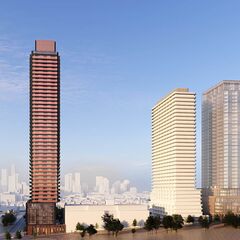Huh? I know all about the European immigrants desire to flee the collapsing tenements of the old world. Does four European grandparents lamenting on the crisis of the the cities they left my whole childhood give me permission to talk about a bunch of WASP millionaires trying to prevent housing the city (including me) desperately needs? Maybe step off your soapbox
A) You're on a soap box. Perhaps
@Undead is too, in that he's advocating in his post for a point of view.
That said, I don't see it as productive posting to just tell another poster not to speak because you don't like what they have to say. The problem with that, I hope, is obvious.
B) Undead is not saying he is unsympathetic to anyone's need for housing, nor is he advocating for ranch-style bungalows on deep lots everywhere (for that matter, I don't think he actually advocated for even one).
Rather, what he's saying is that nimby'ism is simply not the primary cause of the housing crisis, and on that point he is 100% sound, period, full-stop. The crisis originates with demand spiking, not supply contracting. That was a policy choice of the state.
That does not mean that we should accept the 'yellowbelt' as status quo. No one is advocating for that; please don't suggest otherwise.
C) Finally, are you aware that WASP means white Anglo-saxon, protestant? Because if you are, you should know that does not describe the majority of homeowners in Toronto.
It's worth saying that those in 'core housing need' as defined by Stats. Can aren't far different between differing groups taken at a high level.
The overall need in Toronto is 16% of the population; the need for racialized groups in Toronto is actually lower at 14.2%
****
Perhaps we could now get back to what this thread is about, which is 1802 Bayview.




















